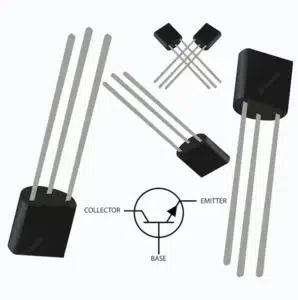Generations of Computer PDF Download: Dear Aspirants!!! Here we have come up with exclusive content regarding the Generations of Computer. Nowadays computer plays a vital role in our day-to-day lives. We cannot imagine our lives without computers because they have made our work easier. The evolution of computers started around the 16th century. The evolution of the computer is the process of which transformation of the oldest vacuum tube-based system to the current model system of today’s computers. In this article, we will see the generation of computer in detail. As we all know the computer awareness section is one of the most important sections in most of the competitive exams like bank, ssc, railway, state exams, upsc, and more. The questions related to the generations of computers have the highest weightage in most of the competitive exams. To score more marks in the computer awareness section aspirants should be familiar with the Generations of Computer, Generations of Computer with years, 1st to 5th Generations of Computer, Generations of Computer with images, Generations of Computer with example, Generations of Computer pdf. For the convenience of the candidates, we have also included the Generations of Computer pdf which will be useful in their future. So aspirants need to focus on the topics related to generations of computer. Candidates in search of Generations of Computer, Generations of Computer pdf, Generations of Computer with years, 1st to 5th Generations of Computer, and Generations of Computer with images, Generations of Computer and their characteristics shall make use of this article. Now let’s move on to this article to get the complete information.
MS Word Shortcut Keys A to Z PDF
Generations of Computer PDF Download
Here we have attached the Generations of Computer PDF for the convenience of the candidates. This Generations of Computer PDF contains all the necessary information related to the generations of computers like Generations of Computer with years, Generations of Computer with images, Generations of Computer with examples, Generations of Computer advantages and disadvantages, 1st to 5th Generations of Computer in detail. So aspirants can utilize the Generations of Computer PDF Download which is given below.
Generations of Computer
As we all know computer plays a vital role in our day-to-day lives. We cannot imagine our lives without computers because they have made our work easier. The evolution of computers began around the 16th century. and it is the process of which transformation of the oldest vacuum tube-based system to the current model system of today’s computers. In recent years, computers faced many changes for their betterment. It has enhanced its many features like shape, speed, accuracy, size, and affordability. The term “generation” in computers shows the evolution of technology. Earlier, the generation term was used to distinguish the computers in terms of varying hardware but now it all together includes the hardware and software which makes up a computer system. So here you can get the generations of computers in detail which are given below. There are five generations of computer which are listed below.
- First Generation of Computers (1940-1956)
- Second Generation of Computers (1956-1963)
- Third Generation of Computers (1964-1971)
- Fourth Generation of Computers (1971-Present)
- Fifth Generation of Computers (Present and Beyond)
| Generation of Computers With Years | ||
|---|---|---|
| Generation | Time Period | Technology Used |
| 1st Generation | 1940s – 1950s | Vacuum Tube Based |
| 2nd Generation | 1950s – 1960s | Transistor Based |
| 3rd Generation | 1960s – 1970s | Integrated Circuit Based |
| 4th Generation | 1970s – Present | Microprocessor Based |
| 5th Generation | Present – Future | Artificial Intelligence Based |
Generations of Computer With Images
We have included the Generations of Computer With Images for the reference of the candidates. The Generations of Computer With Images are also added in the Generations of Computer pdf which is attached to this article.
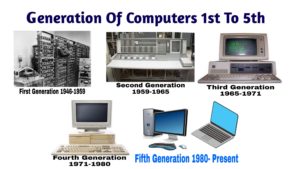
Now let’s look at the 1st to 5th generations of computers with images and their characteristics.
Generations of Computer – First Generation of Computers
First Generation of Computers: The time period of first generations of computers is 1940-1956. The first generation of computers depended on machine language instructions and used vacuum tubes in their construction. These tubes are commonly used in switches, amplifiers, radios, televisions, etc. For the memory and taking up the big rooms, the vacuum tubes were used on the first generation of a computer for the magnetic drums and the circuitry. It produced a large amount of heat and was very costly to operate; also, it consumed high electricity. The First Generation of Computer was very heavy and large and were not ideal for programming. They used basic programming and didn’t have an operating system which is the reason for making it tough for users to do programming on them. The first generation of computers was not considered programmable as the instructions that could be carried out by the machines were all pre-programmed into them at the time of manufacture. This meant that the instructions built into the machine had to be changed after construction to carry out new tasks.
Examples of First Generation of Computers,
- ENIAC (Electronic Numerical Integrator and Computer): This machine, built by J. Presper Eckert and John V. Mauchly, incorporated a staggering 18,000 vacuum tubes.
- EDVAC (Electronic Discrete Variable Automatic Computer): constructed by Von Neumann, this computer represented a necessary advancement in computing technology.
- UNIVAC (Universal Automatic Computer): Designed by Eckert and Mauchly in 1952, UNIVAC was another remarkable creation of the first-generation computer era.
Check the image of the First Generation of Computers given below.
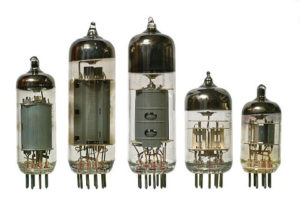
Vacuum Tubes
Characteristics of First Generation of Computers
Check the characteristics of the First Generation of Computers in the table given below.
| First Generation of Computers | |
|---|---|
| Characteristics | Components |
| Main electronic component | Vacuum tube. |
| Programming language | Machine language. |
| Main memory | Magnetic tapes and magnetic drums. |
| Input/output devices | Paper tape and punched cards. |
| Speed and size | Very slow and very large (often taking up an entire room). |
| Examples of the first generation | IBM 650, IBM 701, ENIAC, UNIVAC1, etc. |
Generations of Computer – Second Generation of Computers
Second Generation of Computers: The time period of second Generation of Computers is the 1956 – 1963 when computers transitioned from using vacuum tubes (First Generation) to transistors. Transistors are smaller in size, more dependable than their predecessors, and smaller, quicker, more energy-efficient, and less expensive. and generate less heat than vacuum tubes. These transistors were invented at Bell Labs and made the computers faster and more powerful. The use of transistors made it possible to perform powerfully and with due speed. It reduced the dimensions and price and thankfully the warmth too, which was generated by vacuum tubes. In the second generation central Processing Unit (CPU), memory, programming language, and input, and output units also came into the force. FORTRAN (1956), ALGOL (1958), and COBOL (1959) are the programming languages used for the second-Generation of Computers. Check the image of the Second Generation of Computers given below.
Transistors
Characteristics of Second Generation of Computers
Check the characteristics of the Second Generation of Computers in the table given below.
| Second Generation of Computers | |
|---|---|
| Characteristics | Components |
| Main electronic component | Transistor. |
| Programming language | Machine language and assembly language. |
| Memory | Magnetic core and magnetic tape/disk. |
| Input/output devices | Magnetic tape and punched cards. |
| Power and size | Smaller in size, had low power consumption, and generated less heat (in comparison with the first-Generation of Computers). |
| Examples of the second generation | PDP-8, IBM1400 series, IBM 7090 and 7094, UNIVAC 1107, CDC 3600, etc. |
Generations of Computer – Third Generation of Computers
Third Generation of Computers: The time period of third Generation of Computers is the 1963 – 1971 when technology envisioned a shift from huge transistors to integrated circuits which is also called IC. The main feature of the Third Generation of Computers was speed and reliability. The ICs used in these computers were made from silicons and were called silicon chips. There are many transistors, registers, and capacitors built on one thin slice of silicon in a single Integrated circuit. There is an increase in memory space and efficiency in the third Generation of Computers. In this era, higher-level languages like BASIC (Beginners All-purpose Symbolic Instruction Code) were used and the Minicomputers were introduced. Check the image of the Third Generation of Computers given below.
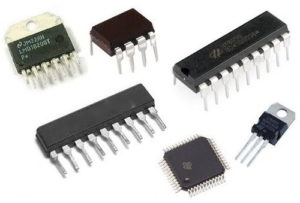
Integrated Circuits
Characteristics of Third Generation of Computers
Check the characteristics of the Third Generation of Computers in the table given below.
| Third Generation of Computers | |
|---|---|
| Characteristics | Components |
| Main electronic component | Integrated circuits (ICs). |
| Programming language | High-level language. |
| Memory | Large magnetic core, magnetic tape/disk. |
| Input/output devices | Magnetic tape, monitor, keyboard, printer, etc. |
| Examples of the third generation | IBM 360, IBM 370, PDP-11, NCR 395, B6500, UNIVAC 1108, etc. |
Generations of Computer – Fourth Generation of Computers
Fourth Generation of Computers: In the fourth generation of computers the technology is transferred to the Microprocessor. These computers used VLSI technologies and Very Large Scale Integrated (VLSI) circuits. In 1971 First microprocessors were used, the large-scale of integration LSI circuits built on one chip called microprocessors. The advantage of this technology is that one microprocessor can contain all the circuits required to perform arithmetic, logic, and control functions on one chip. The use of personal computers (PCs) grew, and IBM developed the first personal computer (PC) in this fourth Generation of Computers, and people started connecting them together to form networks. This made it simpler for everyone to use computers in their day-to-day lives. Check the image of the Fourth Generation of Computers given below.

Microprocessor
Characteristics of Fourth Generation of Computers
Check the characteristics of the Fourth Generation of Computers in the table given below.
| Fourth Generation of Computers | |
|---|---|
| Characteristics | Components |
| Main electronic component | Very-large-scale integration (VLSI) and the microprocessor (VLSI has thousands of transistors on a single microchip). |
| Memory | semiconductor memory (such as RAM, ROM, etc.). |
| Input/output devices | pointing devices, optical scanning, keyboard, monitor, printer, etc. |
| Examples of the fourth generation | IBM PC, STAR 1000, APPLE II, Apple Macintosh, Alter 8800, etc. |
Generations of Computer – Fifth Generation of Computers
Fifth Generation of Computers: The Fifth Generation of Computers has been designed using the technology called Artificial Intelligence (AI) also called AI. It allows computers to act like humans. There are some features in AI like voice recognition, area of medicine, entertainment, etc. Fifth-Generation of Computers, also referred to as modern computers, are still in the development stage and are based on artificial intelligence. Japan invented the FGCS (Fifth Generation Computer System) in 1982. The Fifth Generation of Computers is based on microelectronic technology with high computing power and parallel processing. The Fifth Generation of Computers has the highest speed while and is smaller in size. In recent years computers have improved in the form of speed, accuracy, and size compared to the previous generations of computers. Check the image of the Fifth Generation of Computers given below.
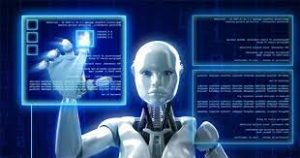
Artificial Intelligence
Characteristics of Fifth-Generation of Computers
Check the characteristics of the Fifth Generation of Computers in the table given below.
| Fifth-Generation of Computers | |
|---|---|
| Characteristics | Components |
| Main electronic component | Based on artificial intelligence, uses the Ultra Large-Scale Integration (ULSI) technology and parallel processing method (ULSI has millions of transistors on a single microchip and the Parallel processing method use two or more microprocessors to run tasks simultaneously). |
| Language | Understand natural language (human language). |
| Size | Portable and small in size. |
| Input/output device | Trackpad (or touchpad), touchscreen, pen, speech input (recognize voice/speech), light scanner, printer, keyboard, monitor, mouse, etc. |
| Example of the fifth generation | Desktops, laptops, tablets, smartphones, etc. |
Generations of Computer PDF – FAQs
Here we have added some common FAQs related to the generation of computers for the reference of the candidates.
Q. Which technology has been used in the second generation of computers?
The technology that has been used in the second generation of computers is Transistors.
Q. What is the time period of the first generation of computers?
1940 – 1956 is the time period of the first generation of computers.
Q. Integrated Circuit technology has been used in which of the generations of computers?
Integrated Circuit technology has been used in third generations of computers.
Q. Which technology has been used in the fourth generation of computers?
The microprocessor has been used in the fourth generation of computers.



